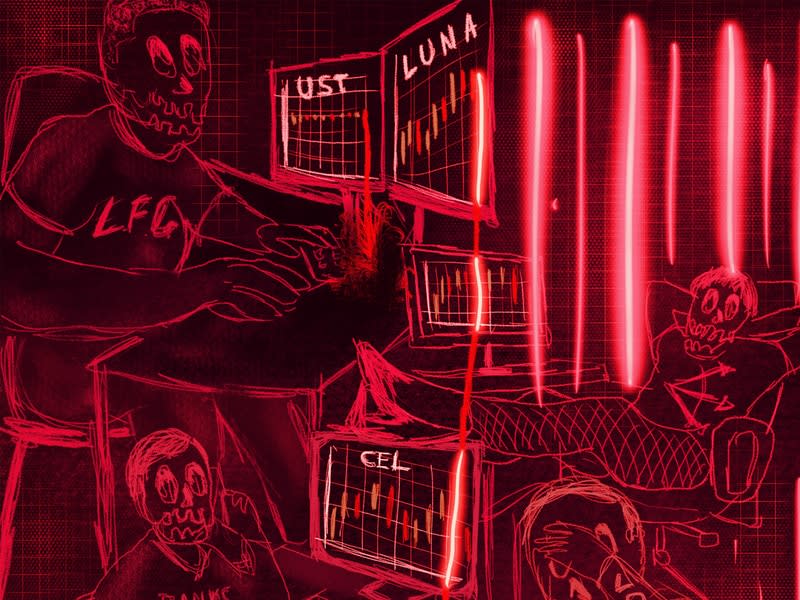Most Influential Artist: Ovie Faruq
Ovie Faruq, aka OSF, started making his first non-fungible token while working as a trader at the London-based Barclays. Already involved in Web3, “mainly buying and selling NFTs,” he doodled a skull wearing a hoodie that said “GM” on it, the NFT community greeting that means “good morning.”
“I randomly decided to make it into an NFT and mint it in October last year on Foundation,” OSF says. Though he had no formal art training, the 33-year-old did have a history in digital art communities like DeviantArt, where amateur artists can post work and connect with each other. He never thought it would lead to a career, but “I like to do things that people don't expect me to do,” he says, which includes selling two of his NFTs to Snoop Dogg.

People may not view him as a “real artist” because he was a finance guy for 10 years, but for OSF that’s the fun part. “I always like to challenge myself.” His “Most Influential” subjects – Terraform Labs co-founder and CEO Do Kwon, Celsius Network founder and CEO Alex Mashinsky, Three Arrows Capital co-founder and CEO Su Zhu and Voyager Digital CEO Steve Ehrlich – may not be the biggest challenge, however, because he comes from their world – finance. These four scammers, who lost investors millions in crypto and therefore earned their collective title as the “Four Horsemen of the Cryptocalypse,” took advantage by appearing, in OSF’s words, “too big to fail,” an almost ironic comparison for its roots in the traditional financial system.
What about your skull doodle made it feel suited to the NFT format?
I'd spent seven or eight months with NFTs and was already feeling quite disillusioned with my day job. It was boring, and I was so fascinated with NFTs. That piece for me was the turning point where I remember thinking, “Am I really going to quit my job and do this stuff full time?”
That doodle coincided with the day that I decided to make that switch, at least mentally. I didn't end up leaving my job until two months later, but that was when I decided to take a leap of faith.
What were some of your main considerations when creating your “Most Influential” portrait of the “Four Horsemen of the Cryptocalypse”?
I wanted to depict their carelessness and neglect. You have some very smart people here who've built huge businesses or made a lot of money, but what ended up taking over is greed or lack of risk management. I understand it – I've seen that happen before as a trader. In this piece, I asked, how do I portray the chain reactions of these guys singlehandedly bringing down this whole ecosystem through their neglect?
Read More: Presenting CoinDesk's Most Influential 2022
What were some of the key artistic decisions you made to convey that?
I wanted to implement red quite a lot. The piece is animated and starts off with blues and greens to signify things are normal. As the frames lapse, the piece starts to turn red, with candlestick charts going down. A lot of my pieces are based on the bad things that happen in crypto, where people lose money or get “rekt.” I've used a similar creative approach here.
I also set the frame-rate of the piece at a much faster pace than I usually do. In pieces where the framerate is slightly slower, it feels chilled out. This piece has a feeling of intensity and things happening very quickly in a short time span. It's kind of uncomfortable to look at.
Are there any lessons you learned from the “four horsemen’s” stories?
Three Arrows Capital, which was run by Su Zhu, or even Terraform Labs by Do Kwon, were huge entities within crypto – almost “too big to fail.” These are the smartest guys in the room, who built up these empires from nothing. There was this idea that they must be right. There's no way they’ll trip up.
The main lesson from this - and what happened with FTX after – is that it doesn't really matter how successful anyone is in the space or how smart anyone is or seems. Anyone can be reduced to zero in a few days or even a few hours. Don't take anything for granted in this space.
